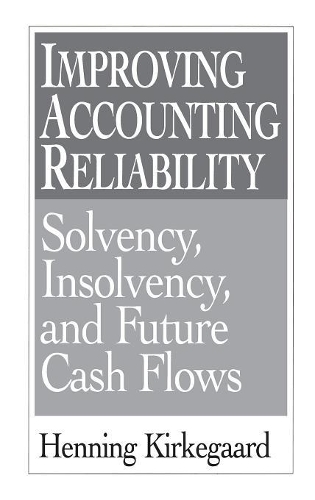
Improving Accounting Reliability: Solvency, Insolvency, and Future Cash Flows
(Hardback)
Publishing Details
Improving Accounting Reliability: Solvency, Insolvency, and Future Cash Flows
By (Author) Henning Kirkegaard
Bloomsbury Publishing PLC
Praeger Publishers Inc
30th October 1997
United States
Classifications
Tertiary Education
Non Fiction
657
Physical Properties
Hardback
352
Description
In most cases, the balance sheet published prior to a business collapse gives no warning signals. Indeed, it often shows a comfortable owners' equity, and thus the auditors fail to sound an alarm in time. The author of this book attributes this largely to the inadequacy of financial statements. So unreliable are they that even the most meticulously prepared statement cannot give a true, fair view of a business's financial health. Statements should be dynamic, he says; current, complete and comprehensible. Most importantly, instead of focussing on profit and owners' equity, they should concentrate on a firm's solvency or insolvency. It then becomes possible, using modern technology, to anticipate liquidity problems before they occur, thus limiting or even preventing future losses. This is intended to be the essence of the model Kirkegaard proposes and develops. Some of the ideas that Kirkegaard offers in his book are: the accounting theory which we know at present has been in a state of what can only be described as deep dogmatic torpor; enterprises which are already insolvent but not yet illiquid are dangerous to their creditors; the truth is that it is impossible to describe the financial position of a business enterprise using traditional financial statements; the concept of time has been a stepchild in accounting theory; it is wrong to believe that the task of accounting is to find out what the financial position is. Accounting is concerned with what we can say about the financial position; and the financial statements of the future can be made logically complete and therefore clean and easy to understand. They can also be made up to date, and used to show the financial situation right now. And this is what will make them reliable.
Author Bio
HENNING KIRKEGAARD is an Associate Professor and researcher at the Copenhagen Business School. Author of numerous journal articles in Danish and English and ten earlier books (including a version of this book under a different title) published in Danish, he has broad, practical experience in the design and use of financial and management information systems. He is also credited with the rediscovery, in 1984, of the original nature of double-entry bookkeeping.
